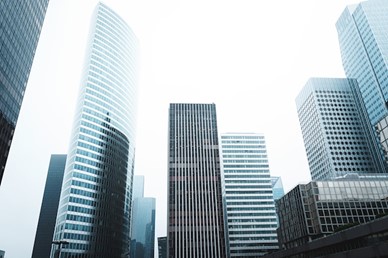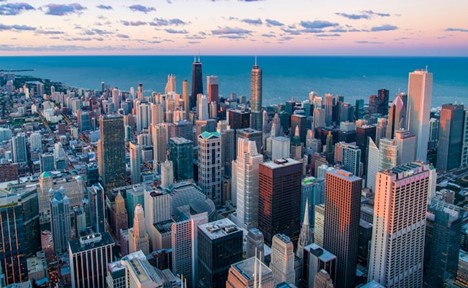Urban revitalization refers to the process of rejuvenating and transforming urban areas that have experienced decline or stagnation. Commercial real estate plays a pivotal role in this transformative process, serving as a catalyst for economic growth, social development, and improved quality of life. David Shulick delves into the multifaceted role of commercial real estate in urban revitalization, examining the strategies, benefits, and challenges associated with this dynamic field.
The Importance of Urban Revitalization
Urban areas often face challenges such as economic decline, infrastructure decay, and social issues. Revitalization efforts aim to address these problems by fostering economic development, improving infrastructure, and enhancing the overall livability of cities. Commercial real estate is a cornerstone of these efforts, providing the necessary infrastructure and investment to drive change.
Key Strategies in Urban Revitalization
Adaptive Reuse of Properties
One of the most effective strategies in urban revitalization is the adaptive reuse of existing properties. This approach involves repurposing old, underutilized, or abandoned buildings for new commercial uses. For example, converting an old factory into a modern office space, retail center, or mixed-use development can breathe new life into a neglected area. Adaptive reuse not only preserves historical and architectural heritage but also reduces the environmental impact of new construction.
Mixed-Use Developments
Mixed-use developments combine residential, commercial, and sometimes industrial spaces within a single project. These developments promote a vibrant, 24/7 urban environment by providing a diverse range of amenities and services. They encourage people to live, work, and play in the same area, reducing the need for long commutes and fostering a sense of community. Successful mixed-use projects can attract a variety of businesses, from retail and dining to entertainment and professional services, creating a dynamic and sustainable urban ecosystem.
Public-Private Partnerships
Public-private partnerships (PPPs) are collaborations between government entities and private developers to achieve urban revitalization goals. These partnerships leverage the strengths and resources of both sectors to undertake large-scale projects that might be too complex or costly for either party to handle alone. Governments can provide incentives such as tax breaks, grants, and streamlined permitting processes, while private developers bring expertise, capital, and innovation. PPPs can result in the creation of new commercial districts, improved infrastructure, and enhanced public spaces.
Benefits of Commercial Real Estate in Urban Revitalization
Economic Growth
Investments in commercial real estate can stimulate local economies by creating jobs, attracting businesses, and generating tax revenue. The development of new commercial spaces attracts entrepreneurs and companies, leading to increased economic activity. This, in turn, supports local suppliers, service providers, and other ancillary businesses, creating a ripple effect that benefits the entire community.

Social and Community Development
Commercial real estate projects can significantly impact social and community development. By creating attractive and functional spaces, developers can encourage social interaction, cultural activities, and community engagement. Retail centers, entertainment venues, and public spaces become gathering points for residents, fostering a sense of belonging and community pride. Additionally, these projects can address social issues by providing affordable housing, job training programs, and other community-focused initiatives.
Environmental Sustainability
Urban revitalization through commercial real estate can also contribute to environmental sustainability. Adaptive reuse and infill development reduce the need for new land development, preserving green spaces and reducing urban sprawl. Sustainable building practices, such as energy-efficient design, renewable energy sources, and green roofs, can minimize the environmental impact of new developments. By promoting walkability and reducing dependence on automobiles, mixed-use developments also contribute to lower carbon emissions and improved air quality.
Challenges in Urban Revitalization
Gentrification
One of the significant challenges associated with urban revitalization is gentrification. While new commercial developments can attract investment and improve living conditions, they can also lead to increased property values and rents. This can displace long-time residents and small businesses that can no longer afford to stay in the area. Addressing this issue requires careful planning and policies that promote inclusive development, such as affordable housing requirements and support for local businesses.
Financing and Risk
Urban revitalization projects often involve significant financial investment and risk. Developers and investors must navigate complex regulatory environments, secure financing, and manage the uncertainties associated with large-scale projects. Public-private partnerships can mitigate some of these risks, but successful revitalization requires a clear vision, strong leadership, and community support.
Balancing Stakeholder Interests
Urban revitalization projects must balance the interests of various stakeholders, including residents, businesses, government agencies, and developers. Achieving this balance requires effective communication, transparency, and a commitment to addressing the needs and concerns of all parties involved. Engaging the community in the planning process and fostering collaboration among stakeholders is essential for the long-term success of revitalization efforts.
Conclusion
Commercial real estate is a powerful tool for urban revitalization, capable of transforming struggling urban areas into thriving, sustainable communities. By employing strategies such as adaptive reuse, mixed-use developments, and public-private partnerships, commercial real estate can drive economic growth, enhance social and community development, and promote environmental sustainability. However, successful urban revitalization requires careful planning, effective stakeholder engagement, and a commitment to inclusive and equitable development. As cities continue to evolve, the role of commercial real estate in shaping their future will remain crucial, offering new opportunities and challenges for developers, investors, and communities alike.
